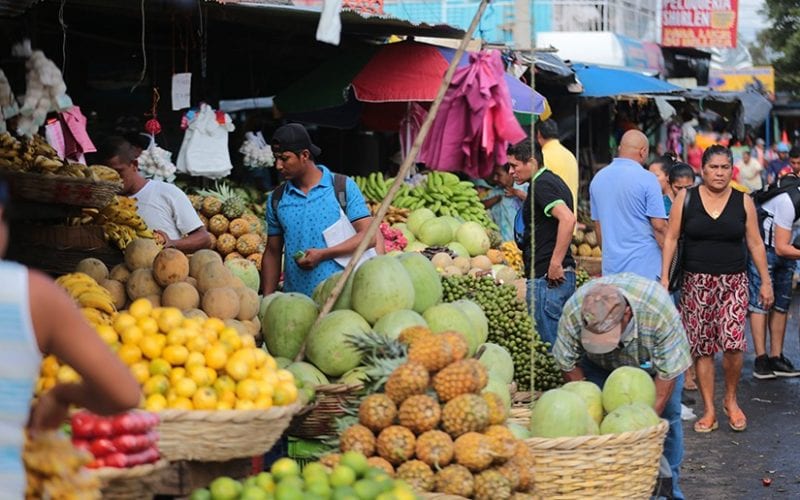Nicaraguan Small Business Lenders Losing Clients Big Time

Considerably less funds available for loans through the microfinance agencies.
Microfinance companies posted losses of 29.5 million dollars in 2018, a 334% reduction compared to 2017.
By Ivan Olivares (Confidencial)
HAVANA TIMES – The companies that form part of the Nicaragua’s Microfinance Association (Asomif) went from a surplus of US $12.6 million dollars in 2017 to losses of US $29.5 million in 2018, a net difference of -335%. According to data from the association’s executive director, Sharon Riquero, the microfinance agencies also “saw their liabilities fall 19% in 2018, which is equivalent to nearly 100 million dollars less in loans to their clients, whose numbers have been equally reduced due to the crisis affecting the country.
Each year the companies dedicated to the financing business must report their results to their shareholders, board and providers of funds. They must also return to the latter the installment payments for the loans received. In many cases, the funders opt to reinvest the amount of the installment, and they may even add new supports when the market is seen as healthy.
But nothing has been the same in Nicaragua since last April 18, and the funders know it. That’s why they’re acting “with precaution”, Riquero explains. “They want to see how events develop. They ask us questions. They’re unsettled by the crisis, they want to know when it will be resolved, but no one has that answer,” she adds.
The tax reform

If the recession and the crisis are worrisome in themselves, the later decisions made by the regime in the economic arena, sharpen that anxiety. “The tax increase worries them because they know that this is a weak economy and that those decisions will affect all companies of any size. The sum total of all these variables deepens the concern,” she commented.
Given this, out of solidarity some funders have maintained the amount of their investment in Nicaragua without change, “but others are merely recovering their money.” The difference between the amounts that the microfinance agencies have repaid their funding sources, and the amounts the latter decided not to reinvest in the country approach the 100 million dollars that Riguero was mentioning.
The effect is greater when taking into consideration that “normally, up to 120% was at times returned to us because the market was growing.” This refers to the fact that the purveyors of funds would send back to Nicaragua the amount of the installment received, plus an additional sum.
From surplus to losses
The direct result of the crisis is “a significant drop across the board”. “The companies associated with the Microfinance Association lost 22% of their portfolio and 21% of their clients, many of whom aren’t receiving attention because all of the economic sectors have been affected – some greater than others – but all are seeing their earnings diminished,” Riguero explained.
That 21% decrease from one year to the other, translates into nearly 117,500 clients, signifying a greater number of families that will see their incomes diminish. In some cases, they limit themselves from continuing to ask for loans, since they feel they haven’t the ability to pay, she explained.
The decrease also occurred because the institutions are reviewing more strictly those requesting credit. “By being stricter, some of them are left out of the system so that if there are fewer external resources, the most ideal candidates are benefited,” Riguero specified.
In the current situation, the microfinance companies are faced with the dilemma of having to decide what’s better for them: to continue lending, although there may be a high risk in placing these credits, or to limit their loans, authorizing only those who offer more security for repayment.
The director of the Association doesn’t believe that the companies should have to choose. In her opinion, what they should do is: “apply both variables. Take care with the clients’ capacity to pay, and also avoid over indebtedness that would be of high risk. What they can’t do is to close off the flow of financing, because that would strangle the clients,” she stated emphatically.
Riguero explains that the amounts can be reduced, “but the way out isn’t to turn off the faucet because their economic situation is fragile, but to adjust ourselves to their capabilities. It’s not just a matter of guaranteeing that the loans are recuperated – because the clients have demonstrated that even in adverse conditions, they fulfill their commitments – but of redesigning the analysis, without denying them credit,” she noted.
The risk of losing the opportunity
What role can the microfinance agencies play in the work of reinvigorating the economy?
Every crisis generates opportunity and a number of people who’ve lost their formal jobs try to reinvent themselves.
“Nicaraguan versatility is always in front of our eyes, and that can help us grow. We have the challenge of continuing to attend to these people, to increase the labor market for those who are looking to get ahead with small economic initiatives, but without neglecting to attend to our loyal clientele,” assures Asomif director Sharon Riguero.
The executive maintains that the crisis has impacted every agency differently, but its stability and continuity doesn’t depend on its size, but on its levels of operational efficiency, their ability to resize their structures, adjust to the crisis and revise different indicators.
